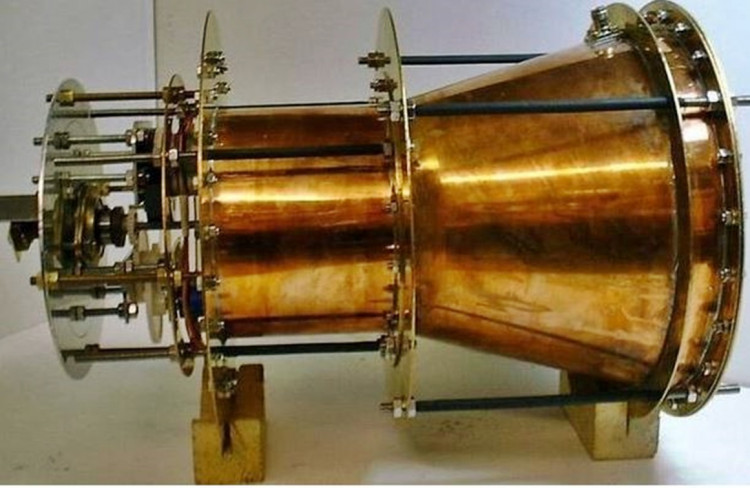German research has found the "impossible" EmDrive engine, whose champions claim can propel a spacecraft to other planets without fuel, doesn't work.
German physicists at Technical University of Dresden published three studies about the EmDrive - all came to the same conclusion: the engine can't produce the thrust said to have been generated in other tests. One test showed the EmDrive didn't produce any thrust at all.
The studies called the alleged thrust in tests conducted by NASA and others were false positives. It attributed the "thrust" created to the warping of fasteners used to secure the EmDrive during tests. Measuring devices mistook this warping for thrust.
Using a new and more accurate measure and different suspension points in the same EmDrive engine, the TU Dresden physicists "were able to reproduce apparent thrust forces similar to those measured by the NASA team but also to make them disappear by means of a point suspension," professor Martin Tajmar said.
"When power flows into the EmDrive, the engine warms up. This also causes the fastening elements on the scale to warp, causing the scale to move to a new zero point. We were able to prevent that in an improved structure. Our measurements refute all EmDrive claims by at least three orders of magnitude," one study said.
Invented by British scientist Robert Shawyer, an EmDrive is a propellantless propulsion system where a rocket engine doesn't burn any chemical propellant to cause a reaction that pushes a rocket forward.
The EmDrive is what's called an "radio frequency resonant cavity thruster." It works by having a magnetron push microwaves into a closed truncated cone. These microwaves push against the short end of the cone to propel a spacecraft forward without any fuel or any thrust output.
"This relies on Newton's Second Law where force is defined as the rate of change of momentum," said an explanation from SPR Ltd, which holds the copyright to the EmDrive.
"Thus an electromagnetic wave, traveling at the speed of light has a certain momentum which it will transfer to a reflector, resulting in a tiny force."
The accumulation of this tiny force in massive quantities is what enables the EmDrive to propel a spacecraft at incredibly fast speeds. Theoretically, an EmDrive can reach extremely high speeds that will allow astronauts to journey to Neptune in only a few months.
The EmDrive is a "reactionless" drive in conflict with the law of conservation of momentum - or Newton's Second Law - which states that within a closed system, linear and angular momentum remain constant regardless of any changes that take place within said system.
In other words, unless an outside force is applied, an object will not move. The EmDrive violates this law.




